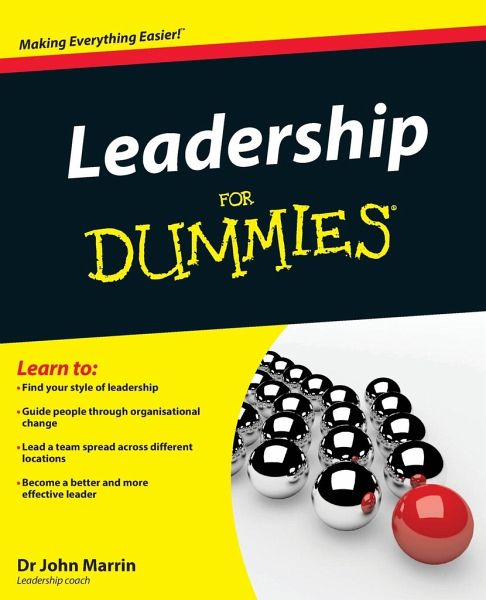
Leadership for Dummies
Versandkostenfrei!
Versandfertig in 2-4 Wochen
25,99 €
inkl. MwSt.
Weitere Ausgaben:

PAYBACK Punkte
13 °P sammeln!
Do you find yourself being asked to lead others but have no idea where to start? Do you lead a team spread across different offices or even continents? In this no-nonsense guide to leadership you will find answers to crucial questions like: what is leadership? And what style of leadership should I be using? You'll discover how to lead your friends whilst remaining their friend; how to lead change in a way that people accept and understand; when and where to draw the line; and how to reflect on your experiences to become a better and more effective leader.Only a lucky few of us are natural born...
Do you find yourself being asked to lead others but have no idea where to start? Do you lead a team spread across different offices or even continents? In this no-nonsense guide to leadership you will find answers to crucial questions like: what is leadership? And what style of leadership should I be using? You'll discover how to lead your friends whilst remaining their friend; how to lead change in a way that people accept and understand; when and where to draw the line; and how to reflect on your experiences to become a better and more effective leader.
Only a lucky few of us are natural born leaders. It takes time and effort to develop a range of leadership styles which work for you and those around you as well as discovering how to become comfortable leading others. Leadership can be a lonely occupation; Leadership For Dummies is your ideal companion. John Marrin explores the fine line between managing and leading and the book is full of tips for making the most of your leadership experiences and how to cope with the dilemmas and discomfort all leaders at some point experience.
Only a lucky few of us are natural born leaders. It takes time and effort to develop a range of leadership styles which work for you and those around you as well as discovering how to become comfortable leading others. Leadership can be a lonely occupation; Leadership For Dummies is your ideal companion. John Marrin explores the fine line between managing and leading and the book is full of tips for making the most of your leadership experiences and how to cope with the dilemmas and discomfort all leaders at some point experience.


